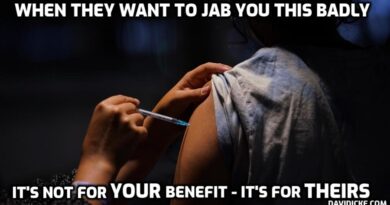Covid-19 Vaccination’s Bumpy Rollout In The US

NEW YORK, NEW YORK – DECEMBER 23: Members of the FDNY EMS speak in the waiting area receiving the … [+]
Getty Images
The latest figures from the Centers for Disease Control and Prevention’s (CDC) show that between 431,000 and 470,000 excess deaths have occurred since the Covid-19 pandemic began. An additional 200,000 deaths are projected by April.
Along with strong mitigation measures to curb the spread, vaccines are powerful tools that will enable us to subdue and eventually end the pandemic. Last month’s emergency use authorization of two vaccines offers real hope in this regard. But, availability of vaccines is not the same thing as actual uptake.
Trump Administration officials had previously predicted there would be 20 million first dose vaccinations by the end of December, but as of January 2nd, only about 4.2 million people have had their first dose, according to a CDC tracker.
At an average of 225,000 administered doses per day, the U.S. daily new infection total often exceeds the daily rate of first dose vaccinations.
It is encouraging that the pace of first dose vaccinations has picked up in recent days. Nonetheless, at the current daily level of uptake it’s going to take years to vaccinate the American people.
Is this a supply problem? A demand issue, such as vaccine hesitancy? Or both?
Clearly, there have been supply problems. Ten days ago, General Gustave Perna of Operation Warp Speed, said he took sole responsibility for confusion regarding allotment of the Pfizer/BioNTech Covid-19 vaccine to states, shortly following its emergency use authorization by the Food and Drug Administration. More than a dozen governors complained that they had received far fewer doses than originally promised.
MORE FOR YOU
Evidently, there are glaring demand issues as well. For instance, 60% of people working in nursing homes in Ohio are electing not to be vaccinated. This begs the question why taking a vaccine is elective for those working in nursing homes. Given that for many decades schools – primary, high school, and college – require proof of multiple vaccinations prior to enrollment, as do many employers in the private and public sectors, it’s puzzling that nursing homes wouldn’t require that caregivers be vaccinated for Covid-19.
Ultimately resolving supply and demand issues related to a public good like the Covid-19 vaccine requires adequate planning and logistics.
The Trump Administration purposely did not establish a national plan for the distribution and administration of vaccines. On December 29th, President Trump tweeted: “It is up to the States to distribute the vaccines once brought to the designated areas by the Federal Government.”
The logistics of the rollout have therefore largely been left up to states to navigate. But most states lack the capacity to properly administer the rollout. Moreover, hospitals and pharmacies are scrambling, trying to figure out where to set up vaccination sites. And, long-term care facilities are sorting out who can administer vaccinations, to whom, and where.
For quite some time, state and local public health officials have warned that they would need more than $8 billion in additional funding to create the infrastructure required to administer vaccines. Instead, the Trump Administration provided states with a paltry $340 million in funding to prepare for vaccinations. This implies that on average states have received less than $7 million each for vaccine readiness.
As Professor Jha, Dean of Brown University’s School of Public Health, lamented “the worst part is no real planning on what happens when vaccines arrive in states. No plan, just hope that states will figure this out.”
Perhaps this reflects a larger problem in the U.S. in which medical advances, such as the Covid-19 vaccines, capture an inordinate amount of attention from the media, the public, and politicians. But, ensuring breakthroughs are given to patients in a timely, efficient manner is equally important. Yet, this requires a universally well-functioning system to deliver care, which the U.S. doesn’t have. The federal government invests billions of dollars in the development of breakthroughs enterprise, but much less in the delivery side. The saying all breakthrough and no follow-through may be a slight exaggeration, but it gets the point across that there is insufficient investment in the follow-through part.
Many leaders have chimed in on the need for more federal involvement in follow-through, as certain issues like the Covid-19 pandemic are uniquely federal because of their interstate and international scope. Senator Romney (R – Utah) bemoaned the fact that comprehensive inoculation plans have not been developed at the federal level and sent to the states as models. He considers this “as incomprehensible as it is inexcusable.”
Sooner rather than later the nation is going to have to vaccinate people at a rate that’s much faster than the current pace of infections. President-elect Biden is pushing for 100 million vaccinations in his first 100 days, which he said would require a pace five to six times as fast as is currently the case.
Perhaps the Biden Administration can learn from Israel’s warp speed inoculation of its population.* Israel’s daily vaccination rate of nearly 2% of the population is astonishing. Israel has already vaccinated 12% of the population, including 42% of people over the age of 60. By comparison, it was pointed that Israel, with roughly the same population as New York City, has at least 10 times as many people.
While vaccinating round the clock, the Israeli government is simultaneously carrying out an extensive public education campaign against anti-vax dis- and misinformation.
As a relatively small nation with a national health insurance and patient registration system Israel has a distinct comparative advantage. Nevertheless, there are other small countries with similar health insurance and patient registration systems which are not (yet) doing nearly as well.
Several European countries, for example, haven’t even begun to vaccinate, including the Netherlands. It appears, however that government officials there as well as other European nations want to first ensure that they’ve got an executable plan in place for comprehensive, mass vaccinations of priority groups to take place safely in, among other sites, long-term care facilities, hospitals, clinics, arenas, convention centers, school gyms, and libraries.
Covid-19 vaccines are public goods. As such, their appropriate distribution isn’t governed by free market principles. Ideally, inoculation programs are informed by a system carefully planned by federal and state authorities for distributing vaccines as effectively and equitably as possible. A lesson to be drawn from the bumpy rollout is that prior to vaccine emergency use authorization there ought to have been a comprehensive distribution plan that included continuous federal assistance to help states establish and maintain a robust vaccination infrastructure.
Full coverage and live updates on the Coronavirus
*** This article has been archived for your research. The original version from Forbes can be found here ***


